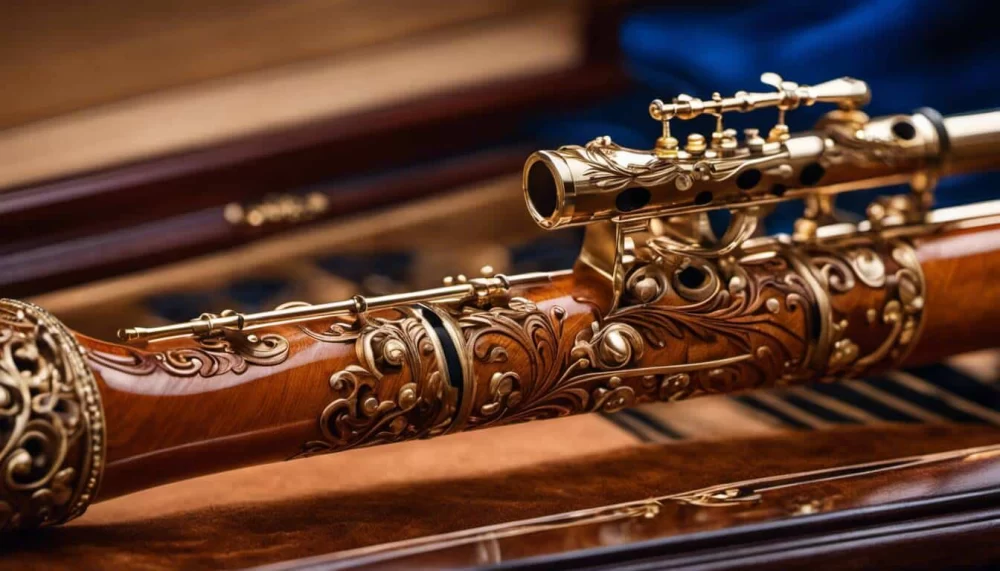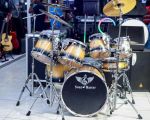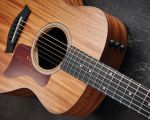
Discovering the Best Woodwind Instruments for Concert Bands
As a passionate musician and member of a concert band, the woodwind section is one of the most captivating parts of any performance. The unique sound of woodwind instruments, from the bright and joyful to the rich and mysterious, creates an essential layer of harmony and melody in any concert band. Choosing the best woodwind instrument for your needs requires understanding the various options available and knowing how each instrument can contribute to a concert band's sound. Whether you're a beginner just starting out or an experienced professional refining your technique, selecting the right woodwind instrument can make a world of difference.
1. Understanding the Woodwind Family
The woodwind family is diverse, consisting of several instruments that differ in tone, playability, and role within the concert band. These instruments are generally made from wood (although some modern versions use synthetic materials), and they produce sound when air is blown through them, either by a single or double reed. The woodwind family includes the flute, clarinet, oboe, bassoon, and saxophone, each offering a unique sound and character.
2. The Flute: A Brilliant High Voice in the Band
The flute is one of the most recognized instruments in the woodwind family, and for good reason. Its bright, clear tone stands out in any ensemble, especially in the higher registers. The flute’s sound is produced by blowing air across a hole near the mouthpiece, and it is one of the few woodwind instruments not requiring a reed. If you're looking for an instrument that offers versatility and can play both melodic and harmonic parts in a concert band, the flute is a fantastic choice. Many orchestras and concert bands have multiple flutes, as they can fill a variety of roles, from supporting harmony to carrying lead melodies.
As a beginner, the flute is often recommended due to its relatively simpler learning curve compared to reed-based instruments. I remember my first experience with the flute—learning to control the airflow was challenging, but the moment I produced my first clear sound, I felt an immediate sense of accomplishment. It’s a rewarding instrument that blends well in a concert band, whether in classical, contemporary, or even jazz settings.
3. The Clarinet: Rich Tone with Flexible Range
Next up is the clarinet, a woodwind instrument known for its smooth, warm tone and wide range. It uses a single reed, which vibrates to produce sound when the player blows air into the mouthpiece. The clarinet's versatility makes it a common instrument in concert bands, able to play both high and low notes with equal finesse. From the hauntingly beautiful low notes to the soaring high register, the clarinet can fill a variety of musical roles.
One of the main advantages of the clarinet is its ability to play fast, articulate passages. It's an instrument that often shines in both classical and contemporary pieces. I distinctly recall an experience during a performance where the clarinet section had to perform a fast, intricate solo. The level of precision required was impressive, but the sound that emerged was so pure and vibrant that it captivated the entire audience. For those looking for an instrument with a rich tone and expressive range, the clarinet is definitely a solid option.
4. The Oboe: The Voice of the Woodwinds
Known for its unique, somewhat plaintive sound, the oboe holds a special place in concert bands. The oboe uses a double reed, which gives it its distinct sound—a voice-like quality that can be both plaintive and beautiful. It’s often used for solo passages, but it also plays a crucial role in the ensemble, providing rich harmonies and counter-melodies. Because the oboe's tone is so distinct, it is often featured in pieces that require emotional depth.
Playing the oboe, however, is not for the faint of heart. It requires precise control of the breath and embouchure, and the reeds can be finicky. I vividly remember my first experience with an oboe solo during a concert. The sound was both challenging to control and rewarding to produce. It was a thrilling moment that reminded me of how critical the oboe is to the overall balance of the woodwind section in a concert band. If you are up for a challenge and are looking for an instrument that can bring a profound emotional layer to your band’s sound, the oboe might be the right choice for you.
5. The Bassoon: Deep, Resonant, and Powerful
The bassoon is another double-reed instrument in the woodwind family, but it stands apart due to its deep, resonant sound. Often providing the bass line in the woodwind section, the bassoon brings a unique depth to concert band performances. The instrument has a wide range, from low, rumbling notes to higher, more agile passages, and it’s capable of both comedic and dramatic expressions.
While the bassoon may not be the most commonly played instrument, it’s essential in many concert band pieces, particularly in classical music. The depth and richness of the bassoon’s sound can support the whole band, especially in moments where a strong, grounding presence is needed. I recall a performance where the bassoon section provided the foundation for a delicate flute solo, creating a stunning contrast that left a lasting impression on the audience. The bassoon’s unique timbre is indispensable in adding richness to any concert band's sound.
6. The Saxophone: A Versatile Powerhouse
Although the saxophone is technically a member of the woodwind family, it often gets classified as a brass instrument due to its metal body. The saxophone’s distinct sound blends elements of both woodwind and brass instruments, giving it a warm, expressive tone that can fit perfectly into both classical and contemporary settings. It is one of the most versatile woodwind instruments, capable of playing both smooth, lyrical passages and bold, jazzy lines.
The saxophone section in concert bands usually includes alto, tenor, and baritone saxophones, each offering different tones and pitches. The flexibility and power of the saxophone allow it to easily stand out during performances. My first encounter with the saxophone was during a jazz ensemble session, and I was captivated by how effortlessly the instrument could shift from soulful ballads to high-energy solos. If you want an instrument that offers both power and subtleness, the saxophone is a top contender.
7. Choosing the Right Woodwind Instrument for Your Concert Band
When selecting a woodwind instrument for a concert band, it’s important to consider several factors: your skill level, the musical style of the ensemble, and personal preferences. If you’re just starting out, the flute or clarinet might be the most approachable instruments, while the oboe and bassoon are more suitable for those with experience. The saxophone, with its broad range of styles and tones, can be a great fit for any musician looking for versatility.
However, the most important factor in choosing the right instrument is finding one that resonates with you. Every woodwind instrument has its unique character, and it’s crucial to find the one that inspires you the most. My advice is to try out different instruments before committing to one and don’t hesitate to reach out to fellow musicians and instructors for advice. Music is a deeply personal journey, and finding the right instrument will make all the difference in your performance and enjoyment.
For more information and to explore some of the best instruments for concert bands, feel free to visit our website Beat Trigger, where you can find expert advice, top-notch recommendations, and the finest woodwind instruments for all skill levels.








